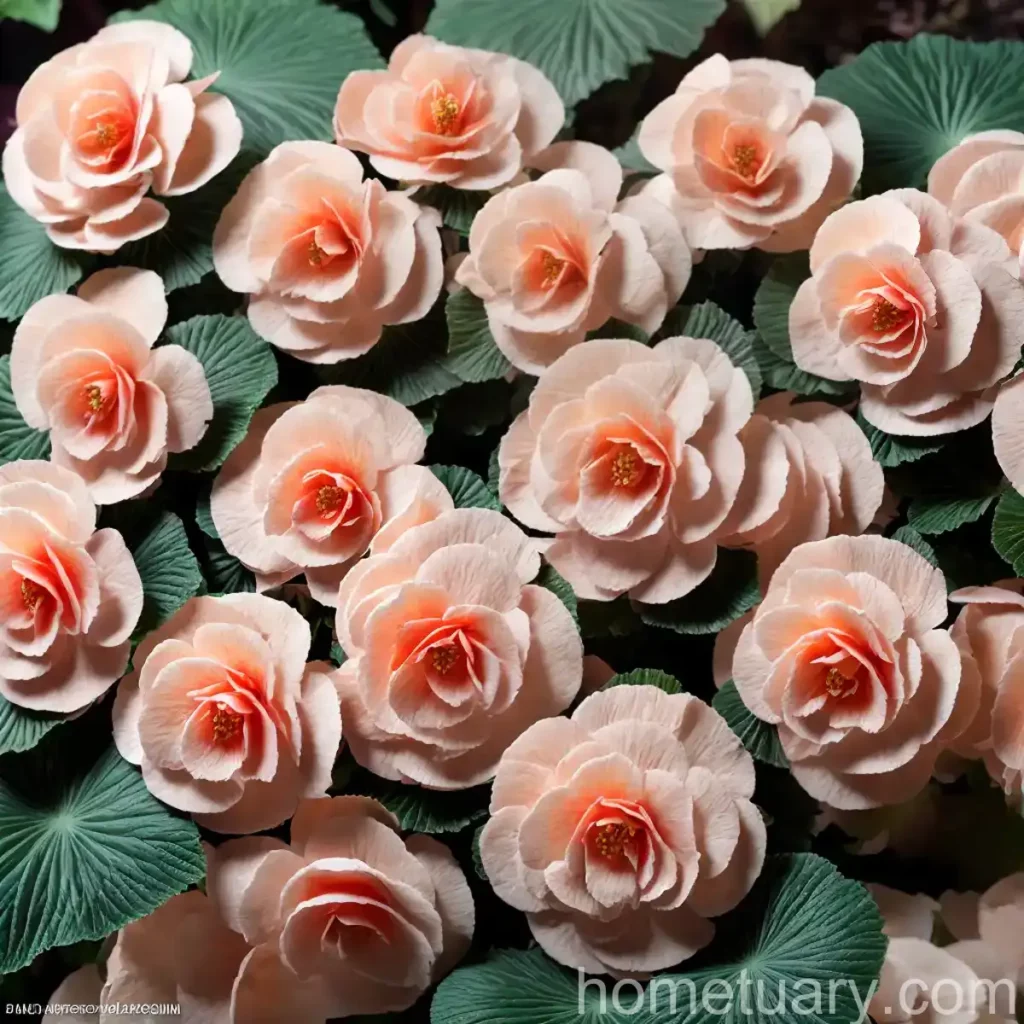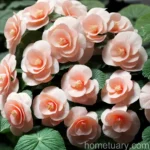Begonia (Begonia Semperflorens Cultorum Group) Care Guide
Begonias are beloved for their vibrant and showy flowers, as well as their attractive foliage. With over 1,800 species, begonias come in a wide variety of shapes, sizes, and colors, making them a popular choice for both indoor and outdoor gardens. In this comprehensive care guide, we will explore the key aspects of cultivating and nurturing begonias, including their cultural requirements, uses, propagation methods, maintenance, and common diseases and pests.
What is Begonia (Begonia Semperflorens Cultorum Group)?
The Begonia Semperflorens Cultorum Group, commonly known as begonia, is a species of flowering plants in the family Begoniaceae. It is a part of the Semperflorens Cultorum Group, which is recognized for its compact, bushy growth habit, and profuse blooming characteristics. These begonias are prized for their ability to thrive in a variety of settings, including containers, hanging baskets, and garden beds.
Key Takeaways
Before delving into the specific care requirements of begonias, it is important to understand some key takeaways about this plant:
- Scientific Name: Begonia Semperflorens Cultorum Group
- Common Name: Begonia
- Family: Begoniaceae
- Plant Type: Herbaceous perennial
- Cultural Significance: Popular for their vibrant flowers and ornamental foliage
- Versatility: Suitable for both indoor and outdoor cultivation
- Uses: Ideal for containers, hanging baskets, and landscape borders
Now, let’s explore the essential elements of successful begonia care.
Culture
Water
Begonias prefer consistent moisture levels. They thrive when the soil is kept slightly moist but not waterlogged. Overwatering can lead to root rot and other fungal diseases, while underwatering can cause the plant to wilt and adversely affect flowering.
- Watering Tips for Begonias:
- Water thoroughly when the top inch of the soil feels dry to the touch.
- Use a watering can with a narrow spout to direct water to the base of the plant, avoiding wetting the foliage.
Sunlight
Begonias thrive in partially shaded to shaded locations. While they can tolerate some direct sunlight, especially in the morning, excessive exposure to intense sun can scorch their leaves and flowers.
- Ideal Sunlight Conditions for Begonias:
- Provide filtered light or dappled shade, especially during the hottest part of the day.
- Too much direct sunlight can lead to leaf burn and reduced flower production.
Fertilizer
Regular fertilization encourages robust growth and abundant flowering in begonias. A balanced, water-soluble fertilizer formulated for flowering plants can be applied every 2-4 weeks during the growing season.
- Fertilizing Begonias:
- Use a diluted, balanced fertilizer with an N-P-K ratio of 10-10-10 or similar.
- Apply fertilizer to damp soil to prevent root burn and ensure proper absorption.
Soil
Well-draining, humus-rich soil is essential for healthy begonia growth. A blend of peat moss, perlite, and compost provides the ideal growing medium for begonias.
- Ideal Soil for Begonias:
- Use a potting mix specifically designed for flowering plants or create a mix with good drainage properties.
- Regularly check the soil’s moisture levels to prevent waterlogging and ensure aeration.
Pruning
Pruning Techniques
Pruning begonias helps maintain a compact, bushy shape and promotes continuous flowering. Regular removal of spent flowers and leggy growth encourages the development of new blooms.
- Begonia Pruning Tips:
- Pinch or snip off faded flowers at their bases to prevent seed formation and encourage additional blooming.
- Trim leggy stems to promote branching and overall plant fullness.
Propagation
Begonias can be propagated easily through stem cuttings. This allows for the creation of new plants from existing specimens.
- Propagation Methods:
- Use sterile scissors or pruners to take 3-4 inch cuttings from healthy stems.
- Place cuttings in a moist, well-draining potting mix and keep them in a warm, humid environment until roots develop.
Container Popularity
Begonias’ compact growth habit and colorful flowers make them well-suited for container cultivation. They add vibrant accents to outdoor patios, balconies, and window boxes.
- Uses of Begonias in Containers:
- Create eye-catching mixed containers by combining begonias with other shade-loving plants such as ferns, impatiens, and coleus.
- Select decorative pots or hanging baskets that complement the begonias’ colorful blooms and attractive foliage.
Common Diseases and Pests
Disease Diagnosis
Begonias are susceptible to several common diseases. Proper diagnosis and treatment are essential for maintaining plant health and vitality.
- Common Begonia Diseases:
- Powdery mildew: Identified by a powdery white coating on leaves and stems.
- Botrytis blight: Presents as brown, water-soaked spots on leaves and flowers.
Common Pests
Several pests, including mites, aphids, and mealybugs, can affect begonias. Regular monitoring and early intervention are crucial for pest management.
- Begonia Pest Identification:
- Mites: Tiny arachnids that cause stippling and webbing on leaves.
- Aphids: Small, soft-bodied insects that cluster on new growth and flower buds.
Botanist’s Tips
Fun Facts
- Did you know that some begonia species are edible? In various cultures, begonia tubers are used as a starchy food source and even as a medicinal remedy.
- Many begonias are rhizomatous, meaning they produce specialized stems that store food and water, aiding in their resilience during periods of drought or neglect.
Links to External Resources
For further information on begonias and their care, please explore the following resources:
In conclusion, begonias are versatile and resilient plants that provide an array of color and texture for gardens and living spaces. By understanding and implementing these care guidelines, you can enjoy healthy, thriving begonias that elevate the beauty of your surroundings. Remember to tailor your approach to the specific variety of begonia you are cultivating, as certain species may have unique requirements. Incorporating begonias into your green spaces can bring a vibrant and cheerful touch to your gardening endeavors.















